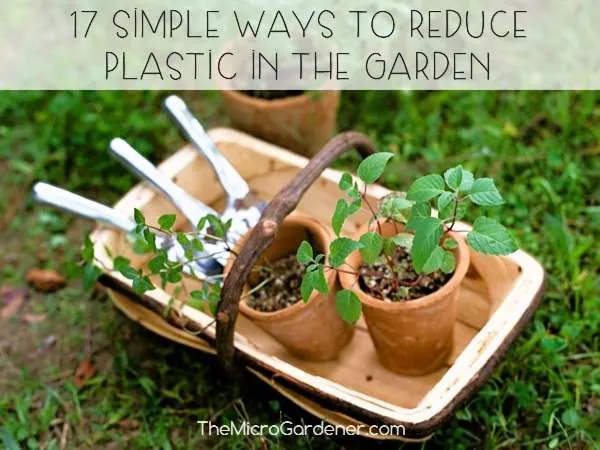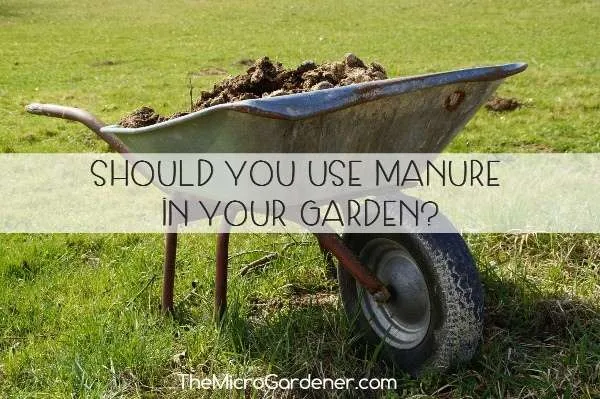If you’re experiencing dry climate conditions, drought or have limited water resources, food gardening may be challenging. Don’t despair! Careful selection of drought tolerant food crops, water-wise gardening practices and improving your soil can all help.
Droughts involve both high temperatures and extended periods without rain. The longer gaps between rainfall cause soils to dry out to greater depths. Heat waves occur when there are multiple consecutive days at very high temperatures. Heat waves can cause injury to plant tissues and in extreme cases, plant death. A deep, fertile mulched healthy soil with vegetation holds a vast amount of water. Unlike shallow bare soil with minimal organic matter. So, a key goal is to improve soil moisture-holding capacity and available nutrition. This will help our plants to grow through rainfall shortages and heat waves. Before we look at drought tolerant food crops, there are other factors to consider for dry gardens.
How Much Water Do Vegetables Need?
On average, most vegetables require around 2.5-3cm (1″) or so weekly. However, this varies considerably depending on the climate, soil characteristics, wind, temperature, stage of plant development and plant variety. Some crops are very reliant on consistent moisture. e.g. Lettuce, corn, cauliflower and coriander. Whereas others can tolerate prolonged periods without watering, like Mediterranean herbs.
During dry times, I aim to water as infrequently as the plants I’m growing will tolerate. However, I also consider if I want the plant to produce an abundant harvest or just maintain minimal growth. i.e. stay alive! I hold off watering during or after rain, and reduce the frequency of watering during cooler weather. If it’s hot or windy, plants transpire more moisture so have higher water needs.
How much water vegetables need also depends on the irrigation method. For example, drip irrigation, a soaker hose, ollas and wicking bed systems provide a gradual release of water at or below soil level. If you water by hand with a hose or watering can, you may need to water more frequently. If this is the case, you might want to consider some water-wise strategies especially if you have limited water resources.
How Often Do Plants Need Watering?
As a general guide, this is how I water my plants. My gardens are all mulched and plants are in suitable containers that aren’t porous.
Vegetables/Pot Plants: In hot, dry weather I water daily except where I use ollas, water spikes, self-watering pots, drippers and my homemade potting mix. These are all buffers that hold moisture longer. I water less frequently in cooler or cloudy calm weather. Usually every second or third day.
Seedlings and newly establishing plants: I usually water daily during hot dry weather for the first fortnight or so. Then 2-3 times a week after that or if they are under shade cloth. In cooler weather, I can usually get away with watering every second or third day for the initial two weeks. Developing healthy roots and shoots is vital at this stage of growth so I don’t skimp on their water needs.
Fruit trees: During establishment in the first couple of years, heat waves or prolonged hot dry weather, I aim for twice a week. Or weekly during a normal summer with reasonably regular rainfall.
Ornamentals with some drought tolerance: Typically get watered weekly in summer and as needed in winter.
Mature drought tolerant ornamentals: This varies with the plant from every 3-4 weeks to never! When I do water, I try to give the plants a deep drink with liquid seaweed rather than just water.
Drought Tolerant Plant Adaptations and Survival Strategies
A lot of drought hardy plants have inbuilt defense systems that allow them to adapt when there is low soil moisture. These are a few of the strategies of drought tolerant plants.
- Deeper root systems to tap moisture away from the surface.
- A symbiotic relationship with mycorrhizal fungi help the vast majority of plants to cope with water stress and increase drought resistance.
- Swollen storage roots (tubers, rhizomes and lignotubers) to retain moisture and nutrients.
- Silver foliage helps reflect sunlight, cool leaves and reduce evaporation.
- Releasing a chemical cocktail of sorts to counter heat and water stress, allowing them to survive for short periods of time.
- Some plants put the ‘pause button’ on their growth. Other species close up their leaves or grow smaller leaves, adapting to the conditions.
- Fruiting crops often abort those fruits they can’t support.
- Some plants show stress by dropping their leaves. I look for these clues so I know which crops might be needing support.
- Fine, thin, waxy, succulent, leathery or hairy leaves.
- Originating from a desert biome. Many plant species adapt to Mediterranean, arid or hot dry climates.
- Bush tucker or native food plants.
I grow quite a few resilient crops that handle drought with far less water. They’re hardy and cope well, continuing to grow despite the climate hardships.
Drought Tolerant Plants Grown from Seed and Seedlings
Seed grown plants often adapt better to dry conditions once established than seedlings from nurseries. Commercially grown seedlings are usually cultivated in very controlled conditions including temperature and consistent moisture. They may be more likely to suffer transplant shock or be less adaptable to harsh conditions when they leave their comfortable environment!
Self-sown seeds or ‘volunteer’ plants that pop up in our gardens are often the hardiest in my experience. Plants that germinate in harsh conditions are resilient and hardy. I want more of those species in my garden!
Mature fruit trees with an established root system in a larger pot are likely to be more drought hardy than very young immature trees. This may vary depending on the cultivar.
How to Select Crops for Dry Climates Carefully
Some crops are extremely inefficient water users. Corn and melons for instance, are water guzzlers! Perhaps buy those varieties you don’t have space for or water resources to support. Consider growing some of the most water-efficient foods instead.
When selecting seed varieties, look for “drought hardy” or “drought tolerant” in the description. Local seed banks and seed saving groups will also usually have a good source of seeds adapted to growing in your microclimate conditions. I save seeds from crops that have grown well in my soil during dry times as this is a characteristic I want to preserve in future plants. Learn seed saving and propagation skills so you can choose the best plants from your own garden at no cost.
List of 75+ Drought Tolerant Foods
Drought Hardy Vegetables, Herbs, Flowers, Fruit & Nuts
There are a wide variety of heat and drought hardy or tolerant food plants for diverse climates. Once established, many plants can endure short dry periods. This list is not exhaustive but rather primarily from observation in my own subtropical climate. You may have different soil types or microclimates and adaptability may vary. However, this is a good starting point if you’re trying to grow drought resistant, heat tolerant food gardens that can survive climate challenges.
Crops for Dry Climates: 20 Drought Tolerant Vegetables
Many vegetables can tolerate minimal water once established and some varieties are just naturally drought hardy. Warrigal Greens (NZ Spinach) grows wild on our local sand dunes! Suranim Spinach (one of my favourite perennials) is incredibly resilient even with no water except dew for months in my garden. Cherry tomatoes of course invite themselves to our gardens and thrive on neglect.
- Anasazi Corn (Zea mays)
- Artichoke (Cynara cardunculus var. scolymus)
- Asparagus (Asparagus officinalis)
- Brazilian Spinach (Alternanthera sissoo)
- Capsicum/Bell Peppers/Chilli (Capsicum annuum)
- Cherry Tomatoes (Solanum lycopersicum)
- Cowpeas (Vigna unguiculata)
- Eggplant (Solanum melongena)
- Kale (Brassica oleracea)
- Lagos Spinach (Celosia argentea)
- Okra (Abelmoschus esculentus)
- Old Man Saltbush (Atriplex nummularia)
- Pigeon Pea (Cajanus cajan)
- Rhubarb (Rheum rhabarbarum)
- Sorrel (Rumex acetosa)
- Suranim Spinach (Talinum triangulare)
- Sweet Potato (Ipomoea batatas)
- Swiss Chard (Beta vulgaris)
- Warrigal Greens/New Zealand Spinach (Tetragonia tetragonioides)
- Yakon (Smallanthus sonchifolius)
47 Drought Tolerant Herbs and Flowers
This is a list of herbs and flowers that are drought resistant once established. So they have low water needs compared to many other species. Many herbs on this list also produce abundant flowers. My Mother of Herbs, Geraniums and Tulsi Basil flower 365 days of the year!
If you want your flowers to bear many blooms, they will do best with water and nutrition through their blooming season. Dianthus, Portulaca, Dogbane, Cosmos and Salvias also put on a beautiful show for months despite dry conditions. Colour and fragrance in the garden really lifts the spirits and feeds our pollinators.
- African Daisy (Osteospermum ecklonis and Osteospermum edulis)*
- Aloe vera (Aloe barbadensis miller)
- Amaranth (Amaranthus cruentus)
- Bay tree (Laurus nobilis)
- Butterfly Bush (Buddleia spp.)*
- Calendula (Calendula officinalis) – edible flowers
- Catmint (Nepeta cataria; Nepeta x racemosa)
- Comfrey (Symphytum officinale)
- Cornflower (Centaurea cyanus) – edible flowers
- Cosmos (Cosmos bipinnatus) – edible flowers
- Dandelion (Taraxacum officinale)
- Dianthus (Dianthus chinensis) – edible flowers
- Dogbane (Plectranthus caninus; Coleus caninus)*
- Echinacea (Echinacea purpurea)
- Garlic Chives (Allium tuberosum)
- Gaura (Gaura lindheimeri)*
- Geraniums and Pelargoniums*
- Hyssop/Agastache (Agastache spp.)
- Lavender (Lavandula spp.)
- Lemon Balm (Melissa officinalis)
- Lemon Grass (Cymbopogon flexuosus)
- Marigold (Tagetes spp.) – edible flowers
- Marjoram (Origanum majorana)
- Mexican Tarragon (Tagetes lucida)
- Moringa/Drumstick Tree/Horseradish Tree (Moringa oleifera) – edible leaves
- Mother of Herbs, Five Spice Herb, Mexican Mint (Coleus amboinicus syn. Plectranthus amboinicus)
- Mugwort (Artemisia vulgaris)
- Mullein (Verbascum spp.) – edible cut flowers and leaves
- Nasturtium (Tropaeolum majus)
- Oregano (Origanum vulgare)
- Portulaca (Portulaca spp.)
- Purslane (Portulaca oleracea)
- Rosemary (Rosmarinus officinalis)
- Sage species (Salvia officinalis) including Pineapple sage (Salvia elegans)
- Salvia (Salvia spp.)*
- Sawtooth/Mexican Coriander (Eryngium foetidum) – Heat resistant perennial
- Seaside daisy (Erigeron glaucus)*
- Snapdragon (Antirrhinum majus) – edible flowers
- Society Garlic (Tulbaghia violacea)
- Stinging Nettle (Urtica dioica)
- Straw Flower (Xerochrysum bracteatum)*
- Sunflower (Helianthus spp.)
- Thyme (Thymus spp.)
- Tulsi/Holy/Sacred Basil (Ocimum tenuiflorum)
- Wild or Perennial Rocket/Arugula (Diplotaxis tennifolia) – Heat resistant
- Yarrow (Achillea millefolium)
- Zinnia (Zinnia elegans syn. Zinnia violacea)
* Not edible
20 Drought Tolerant Fruit and Nuts
Once fruit trees and plants are established, these varieties can tolerate hot dry conditions. All need water to develop their root systems so they can draw on this during dry times. Be realistic in your expectations though! If fruit trees or plants experience drought conditions, fruit production and yields will be significantly lower. Fruit will often abort if the tree or plant can’t sustain it. Provide adequate water when in flower and fruit to get the best yields. If you have to make a tough decision, it may be better to forgo the harvest for one season to help your plant survive for future years.
- Alpine Strawberry (Fragaria vesca)
- Date Palm (Phoenix dactylifera)
- Dragon fruit/Pitaya (Hylocereus undatus)
- Feijoa ‘Pineapple Guava’ (Acca sellowiana)
- Fig (Ficus carica)
- Goji Berry (Lycium barbarum)
- Guava (Psidium guajava)
- Grape (Vitis vinifera)
- Jujube (Ziziphus jujube)
- Loquat (Eriobotrya japonica)
- Lychee (Litchi chinensis)
- Macadamia ‘Gouros’ (Macadamia integrifolia) – this cultivar tolerates high heat and dry conditions
- Mango (Mangifera indica)
- Mulberry (Morus alba)
- Olive (Olea europaea)
- Panama Berry (Muntingia calabura)
- Pineapple (Ananas comosus)
- Pomegranate (Punica granatum)
- Rosella (Hibiscus sabdariffa)
- Strawberry (Fragaria x ananassa) – some cultivars are wild or tolerate hot, dry conditions e.g. Red Gauntlet, Beach Strawberry (Fragaria chiloensis)
I hope you find these tips and the list of resilient drought hardy plants helpful.
Plants don’t always have the perfect living conditions but many adapt. Life throws us curveballs at times, challenging us to find ways to keep going too. I find great hope, inspiration and motivation by turning to nature at times like this. If plants can survive – and even thrive – when the going gets tough, we can too. We may have to dig deep, lean on friends or ask for support to get through. Helping our plants through challenges prepares us to do the same in life.
Water-Wise Plants for Dry Gardens
Related Articles:
- Tips to Grow Food in Hot, Dry or Windy Weather
- 18 Top Tips for Gardening in Dry Climate Conditions
- Guide to Understanding Microclimates in your Garden
- 40+ Best Shade Tolerant Vegetables
- Top Tips for Wet Weather Gardening
- Ten Water Saving Tips for Your Garden
Like this article?
Please share and encourage your friends to join my free Newsletter for exclusive insights, tips and all future articles.
© Copyright Anne Gibson, The Micro Gardener 2023. https://themicrogardener.com. All rights reserved.
Some links within this article may be affiliate links. I only recommend products or services I use personally or believe will add value to my readers. If you purchase a product via an affiliate link, I will earn a small commission (and I mean REALLY small)! There is no additional cost to you. It’s a way you can support my site, so it’s a win-win for both of us. You directly support my ability to continue bringing you original, inspiring and educational content to help benefit your health. Thanks! Please read my Disclosure Statement for more details.













Leave A Comment